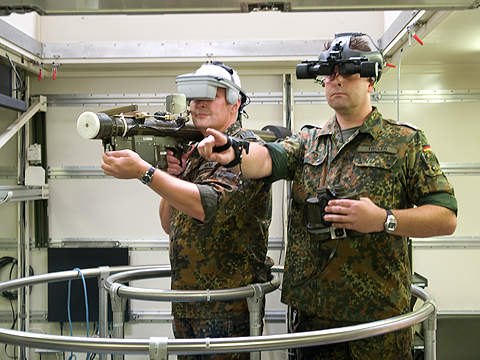La tecnología de realidad virtual (VR) ha evolucionado significativamente en los últimos cinco años, con mejoras tanto en el lado del hardware como del software. Sin embargo, problemas como la latencia, las náuseas, los precios altos , han sido obstáculos para la adopción generalizada.
Virtual reality (VR) technology has evolved significantly over the past five years, with improvements on both the hardware and software side. However, issues such as latency, nausea, high prices, and underdeveloped ecosystems have been obstacles to widespread adoption.
Listed below are the key media trends impacting the VR industry, as identified by GlobalData.
Gaming
Gaming is the most fertile ground for virtiual reality. Sony sold 4.2 million PSVR headsets between October 2016 and March 2019, while the newly launched Oculus Quest gaming headset is competing directly with the popular Nintendo Switch, which offers the Labo VR kit. Valve’s Index VR and HTC’s Vive Focus Plus headsets – both launched in 2019 – are also in the race. VR gaming job postings are also growing, with Indeed.com reporting a 93% increase between 2015 and 2018.
The next-generation gaming consoles from Sony and Microsoft are expected to feature advanced VR technology. Gaming represents an instrumental application area that will shape VR’s progress over the next few years.
Arcades
VR arcades serve two purposes: spreading awareness about immersive entertainment technologies and content, and catalysing adoption. Of the approximately 4,000 VR arcades estimated to be operating globally, China has more than 3,000 of them, whereas the US has fewer than 100. With major demand arising from esports players, several arcade operators are initiating VR gaming tournaments, thereby merging arcade VR gaming and esports into a new format.
Game developers, like Vertigo Games and Bandai Namco, are making serious strides in the arcades segment. Vertigo is establishing a new company to convert their games into virtual reality while Bandai Namco has developed its own Vive-powered experiences for a VR Zone in Tokyo. HTC is arguably the most prominent headset maker in the arcade space with the Vive Enterprise Edition and Viveport Arcade portal.
Streaming
Facebook’s 2017 introduction of Oculus Venues, a VR-based social, co-viewing, and streaming service for live events, amplified the association between VR and the events industry. Oculus Venues currently works on Oculus Go and Gear VR headsets, and competes against NextVR, Google’s YouTube VR, Sony’s PlayStation Vue, and start-ups such as FoxVR, LiveLike, BigScreen, and High Fidelity, among others. HTC’s Streamlink app and Valve’s SteamVR are also prominent services in this domain.
With 5G having the potential to catalyse growth, AT&T, SK Telecom, NTT DoCoMo, and Fraunhofer (among others) are entering the domain with their own services. Amazon is promoting Amazon Web Services (AWS) as a cloud-based VR streaming platform. While VR content is mostly games-oriented and VR adoption remains fragmented, it is too early to gauge the demand for VR streaming.
Films
The visceral experiences of VR are potentially an exciting opportunity for filmmakers. Unfortunately, VR filmography remains unpolished and experimental. Several large film studios are exploring the potential of VR to add life to their stories. The world’s first VR feature film – Lone Wolf – is currently under development, while Disney leads the pack with Disney Movies VR and Hulu, which has VR content in its portfolio.
The Chinese streaming giant iQiyi (owned by Baidu) is taking proactive steps towards VR films. In addition to partnering with VR developers to convert its extensive list of Chinese movies into VR versions, iQiyi is developing a 4K VR headset. VR device makers are also scrambling to position their devices in films. In 2018 HTC Vive Studios released a feature-length VR film created in VR called 7 Miracles. Facebook, Samsung, and Sony are also seeking partnerships with Hollywood studios to make VR content and promote their own VR standards as industry benchmarks.
Retail
After Alibaba introduced VR shopping malls in China in 2016, several US-based ecommerce firms, including Amazon and eBay, followed their lead, while retail giant Walmart acquired VR start-up Spatialand, subsequently filing patents for technology allowing users to get an in-store experience at home. Several brands, mostly in the premium and luxury category, are introducing their own VR shopping apps to add convenience for customers. John Lewis is also bringing VR into its stores, to enable shoppers to view how furniture might look like in their homes.
At the device level, Facebook and HTC are looking to capture the emerging VR shopping market. HTC has partnered with Amazon India and rolled out Viveport VR apps through the retailer’s online store, while Facebook has partnered with Macy’s to deliver virtual reality experiences in US stores.
Social media
Nearly 80% of VR owners are interested in engaging socially with other VR owners, according to a survey from Greenlight Insights. This suggests that social media could be the next frontier for VR after gaming. Competition in this domain is already on the rise. Facebook, Tencent, Snap, Weibo (Sina), and AltspaceVR (Microsoft) are developing social media content for VR, while a wide range of start-ups – including VRChat, vTime, Tabletop Simulator, BigScreenVR, High Fidelity, NextVR, and Wave VR – are crowding the market.
Fuente: https://www.army-technology.com


